Missouri’s skies are graced by the presence of twelve remarkable hawks, each embodying unique characteristics that contribute to the state’s diverse avian landscape.
These formidable raptors, ranging from the sleek Peregrine Falcon to the graceful Mississippi Kite, showcase the intricate tapestry of Missouri’s ecosystems.
As we embark on a journey to uncover the lifestyles of these hawks, one question surfaces: What makes these birds of prey truly exceptional in the Show-Me State? The answer lies in the intricacies of their sizes, habitats, and hunting strategies.
From the urban prowess of the American Kestrel to the expansive migrations of the Swainson’s Hawk, each species holds a key to understanding the delicate balance of Missouri’s wildlife.
12 Hawks in Missouri
In this exploration, we delve into the lives of these majestic creatures, unraveling the mysteries that make the presence of these twelve hawks a testament to the resilience and adaptability of Missouri’s avian residents.
1. Red-shouldered Hawk
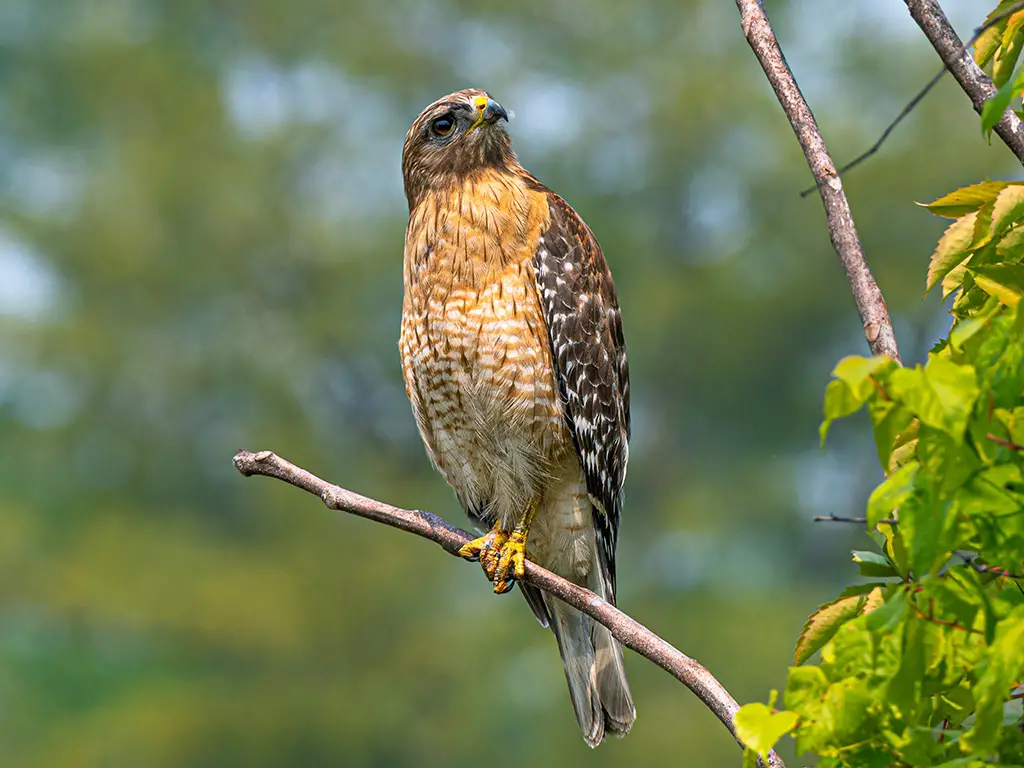
- Scientific name: Buteo lineatus
- Size: 17-24 inches
- Weight: 1.5-2.2 pounds
- Population: Stable
- Life span: 10-15 years
- Wingspan: 37-43 inches
- Status: Least Concern
Red-shouldered Hawks are medium-sized raptors distinguished by their striking reddish-brown shoulders. These hawks prefer wooded habitats and are commonly found near water sources.
They have a distinct vocalization that sounds like “kee-yer.” Red-shouldered Hawks are expert hunters in their lifestyle, preying on small mammals, amphibians, and reptiles.
They are known for their loud calls, especially during the breeding season when pairs engage in dramatic aerial displays. Nests are typically built in the main fork of large trees and are reused each year, often leading to impressive structures.
2. Ferruginous Hawk
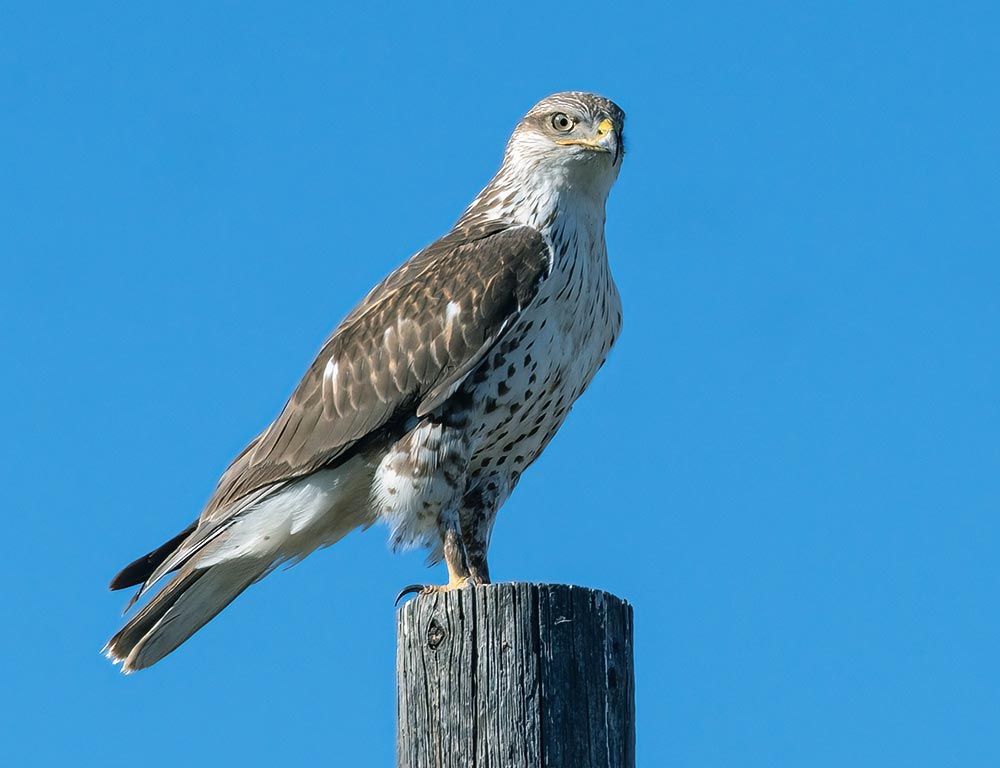
- Scientific name: Buteo regalis
- Size: 22-27 inches
- Weight: 2.5-5.5 pounds
- Population: Declining
- Life span: 8-15 years
- Wingspan: 52-56 inches
- Status: Threatened
Ferruginous Hawks are large, light-colored hawks with a distinctive rusty appearance. They inhabit open grasslands and deserts, primarily hunting small mammals like ground squirrels and prairie dogs.
Ferruginous Hawks are known for their ground-nesting habits, creating nests on the bare ground rather than in trees.
These hawks are highly territorial during the breeding season, often engaging in impressive aerial displays to defend their nesting sites.
3. Northern Goshawk

- Scientific name: Accipiter gentilis
- Size: 20-26 inches
- Weight: 1.5-3.5 pounds
- Population: Stable
- Life span: 15-20 years
- Wingspan: 40-46 inches
- Status: Least Concern
Northern Goshawks are large, powerful hawks with broad wings and a short, robust tail.
They inhabit dense forests and are skilled at maneuvering through the trees to capture prey. Goshawks are known for their agility and aggressive hunting behavior.
They primarily feed on birds and mammals, using their sharp talons to catch prey in flight. During the breeding season, Northern Goshawks build nests high in the trees, providing a secure environment for their young.
4. Rough-legged Hawk
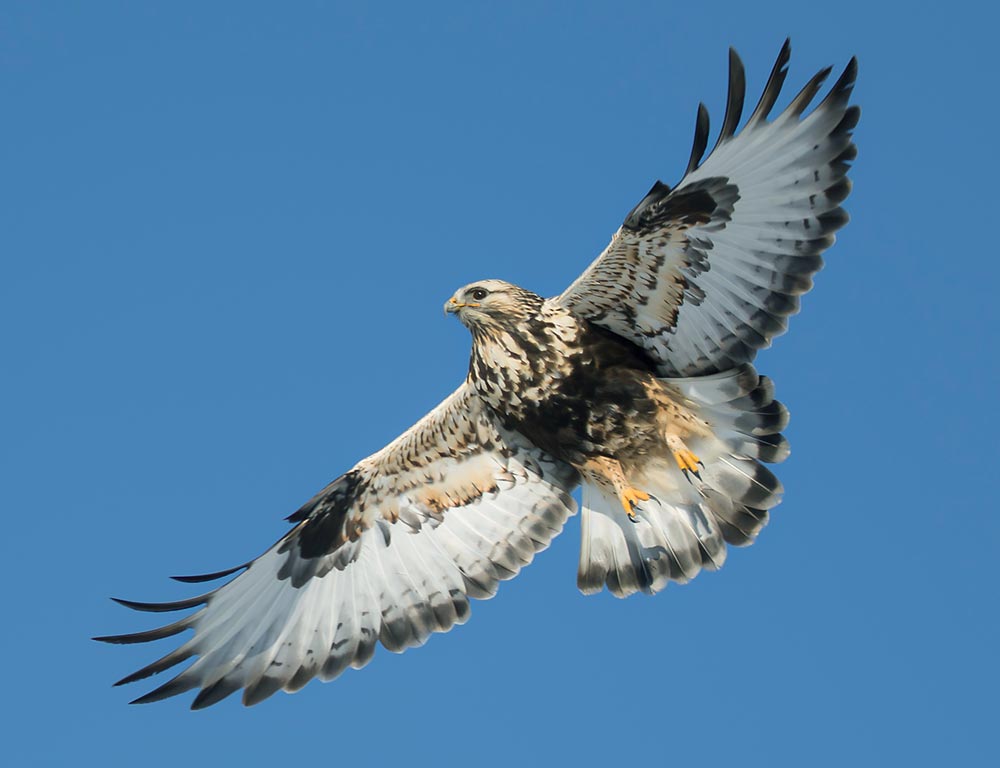
- Scientific name: Buteo lagopus
- Size: 18-24 inches
- Weight: 1.5-3.5 pounds
- Population: Stable
- Life span: 5-10 years
- Wingspan: 52-54 inches
- Status: Least Concern
Rough-legged Hawks are medium-sized raptors known for their feathered legs, which extend all the way to their feet. They inhabit arctic and subarctic regions, migrating south during the winter months.
These hawks are highly adapted for hunting over open fields, hovering in the air to spot small mammals like voles and lemmings.
Rough-legged Hawks build nests on cliffs or elevated locations, and they are known for their cooperative breeding behavior, with family members helping to care for the young.
5. Broad-winged Hawk
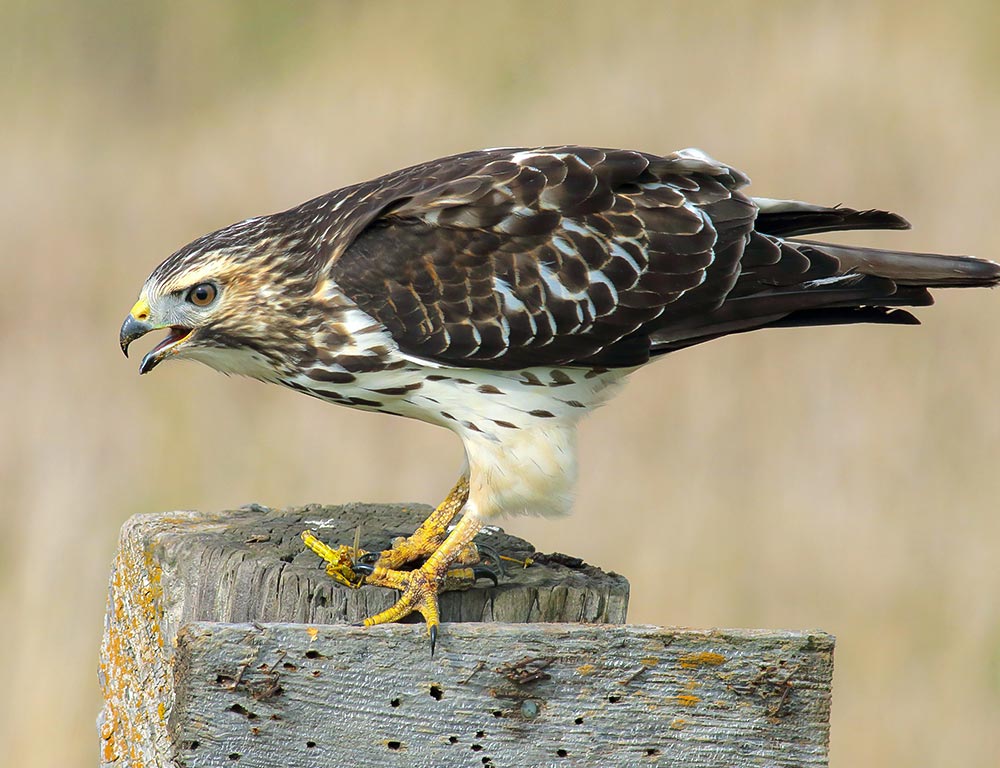
- Scientific name: Buteo platypterus
- Size: 13-17 inches
- Weight: 9-20 ounces
- Population: Stable
- Life span: 4-6 years
- Wingspan: 31-39 inches
- Status: Least Concern
Broad-winged Hawks are small to medium-sized raptors known for their distinctive banded tails. They prefer dense forests and are often identified by their characteristic high-pitched whistling calls during migration.
In terms of lifestyle, these hawks are migratory birds, undertaking impressive long-distance journeys in large flocks. They primarily feed on small mammals and reptiles and build nests in trees, usually close to water sources.
6. Sharp-shinned Hawk
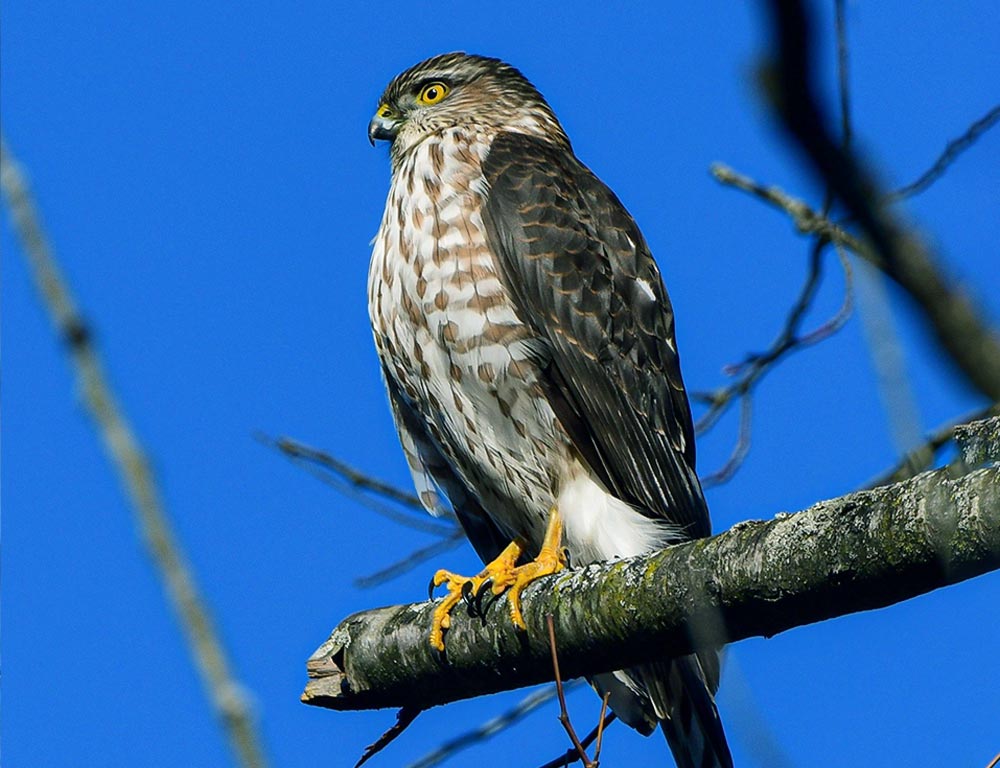
- Scientific name: Accipiter striatus
- Size: 9-14 inches
- Weight: 3-8 ounces
- Population: Stable
- Life span: 4-6 years
- Wingspan: 16-22 inches
- Status: Least Concern
Sharp-shinned Hawks are small, agile raptors with short wings and long tails. They inhabit forests and wooded areas, preying on small birds and occasionally rodents.
These hawks are expert ambush predators known for their rapid flight and sharp hunting skills.
They build nests in trees and are often associated with suburban and urban environments where they find ample prey around bird feeders.
7. Swainson’s Hawk
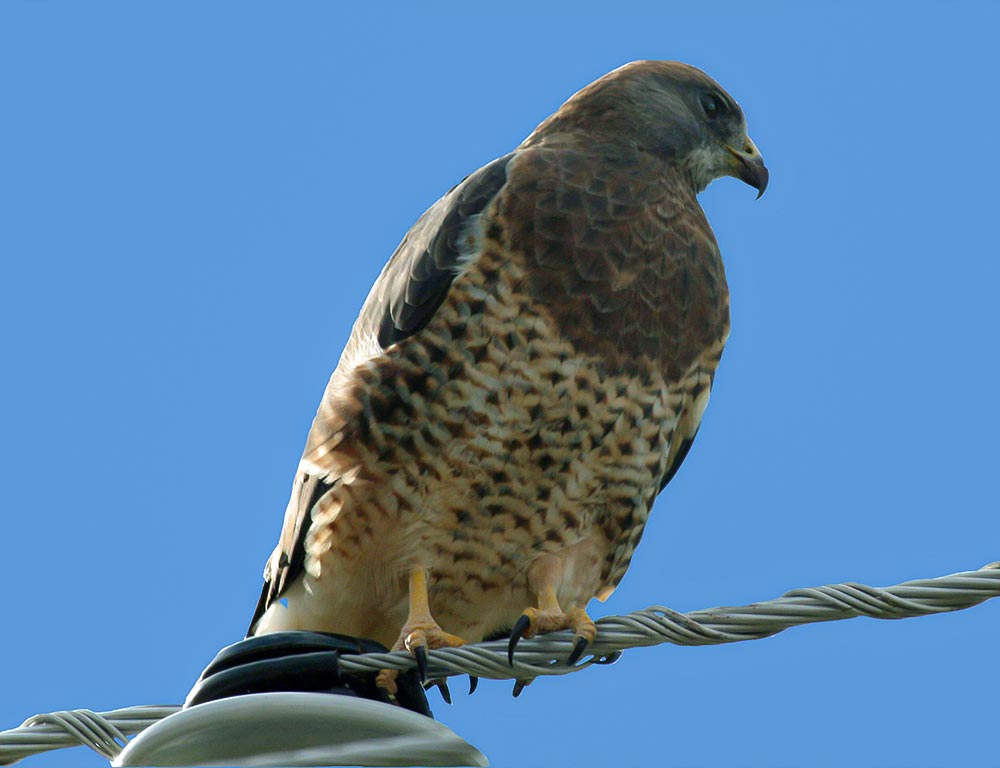
- Scientific name: Buteo swainsoni
- Size: 18-22 inches
- Weight: 2-3.5 pounds
- Population: Declining
- Life span: 7-10 years
- Wingspan: 48-54 inches
- Status: Threatened
Swainson’s Hawks are medium-sized hawks with a distinctively long and slender build.
They inhabit open grasslands and are known for their impressive long-distance migrations, covering thousands of miles. These hawks primarily feed on insects, small mammals, and reptiles.
Swainson’s Hawks build stick nests on trees or even on the ground in more arid regions. Unfortunately, their populations have declined due to habitat loss and pesticide exposure during their South American wintering grounds.
8. Northern Harrier

- Scientific name: Circus hudsonius
- Size: 18-24 inches
- Weight: 10-26 ounces
- Population: Stable
- Life span: 5 years
- Wingspan: 40-48 inches
- Status: Least Concern
Northern Harriers are medium-sized hawks with a distinctive facial disk reminiscent of an owl. They are commonly found in open habitats like marshes and grasslands.
Harriers are known for their low, coursing flight as they hunt for small mammals and birds.
They often build nests on the ground, hidden in tall vegetation. Northern Harriers are notable for their polygynous mating system, where one male may mate with multiple females in a season.
9. Peregrine Falcon
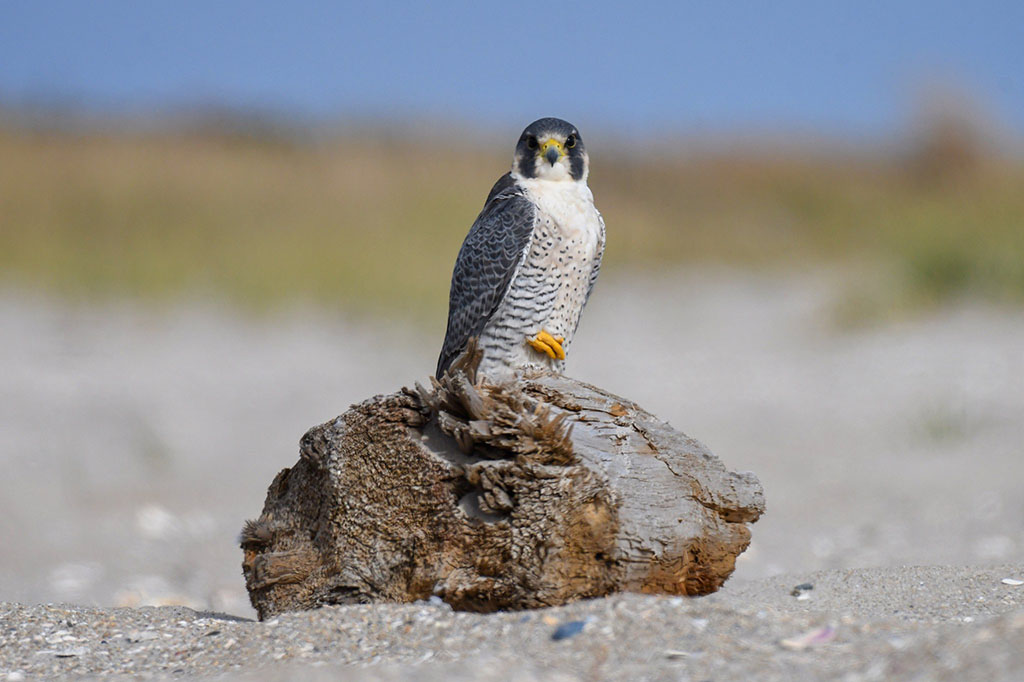
- Scientific name: Falco peregrinus
- Size: 14-19 inches
- Weight: 1.1-2.3 pounds
- Population: Increasing
- Life span: 8-15 years
- Wingspan: 39-43 inches
- Status: Least Concern
Peregrine Falcons are known for their incredible speed and are one of the fastest birds in the world.
They have a sleek, powerful build and are often seen in various habitats, including urban areas. Peregrine Falcons are expert hunters, preying on other birds.
They are known for their high-speed aerial pursuits, diving from great heights to capture their prey mid-air. With the ban on DDT, their populations have rebounded, making them a conservation success story.
10. American Kestrel
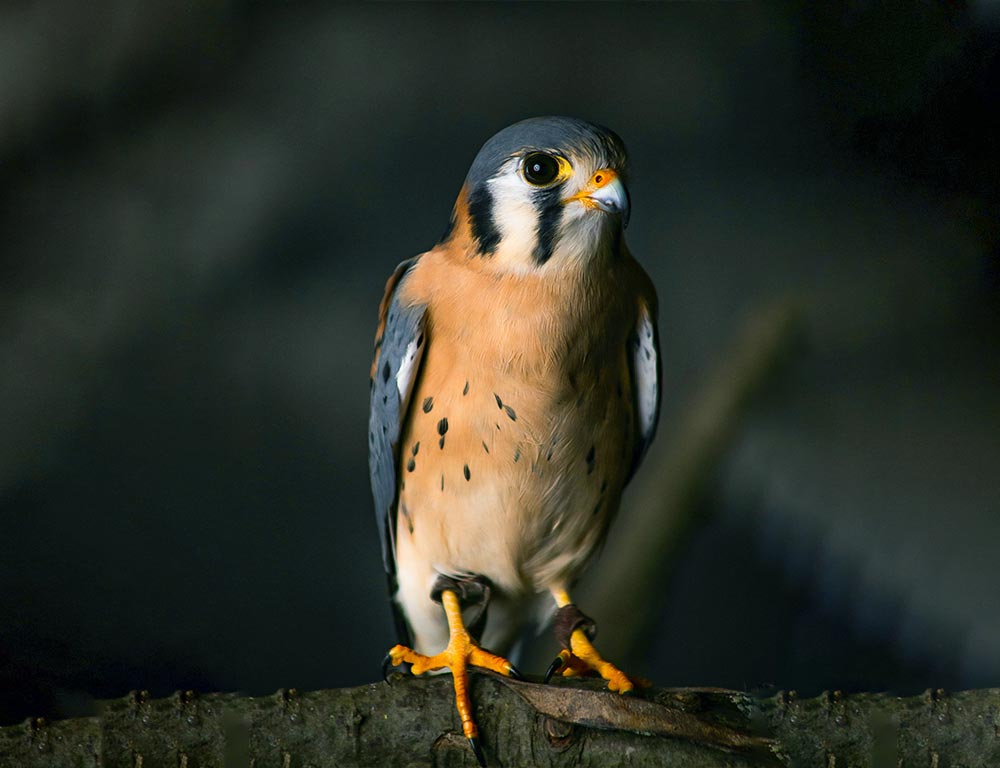
- Scientific name: Falco sparverius
- Size: 8-12 inches
- Weight: 3.5-6 ounces
- Population: Stable
- Life span: 5-10 years
- Wingspan: 20-24 inches
- Status: Least Concern
American Kestrels are the smallest and most colorful falcons in North America. They are commonly found in open habitats such as grasslands, farmlands, and urban areas.
These kestrels are known for their hovering flight as they search for small mammals, insects, and birds.
They often use abandoned cavities for nesting. With adaptability to various environments, American Kestrels have maintained stable populations across their range.
11. Merlin

- Scientific name: Falco columbarius
- Size: 9-13 inches
- Weight: 6-8 ounces
- Population: Stable
- Life span: 5-10 years
- Wingspan: 20-26 inches
- Status: Least Concern
Merlins are compact, fast-flying falcons that inhabit various open and semi-open habitats. They have a distinctive facial pattern with a mustache-like stripe. Merlins are agile hunters, preying on small birds and occasionally insects.
They are known for their rapid, twisting flight as they chase prey. They build nests in trees or on cliffs and are often associated with various landscapes, from tundra to urban areas.
12. Mississippi Kite
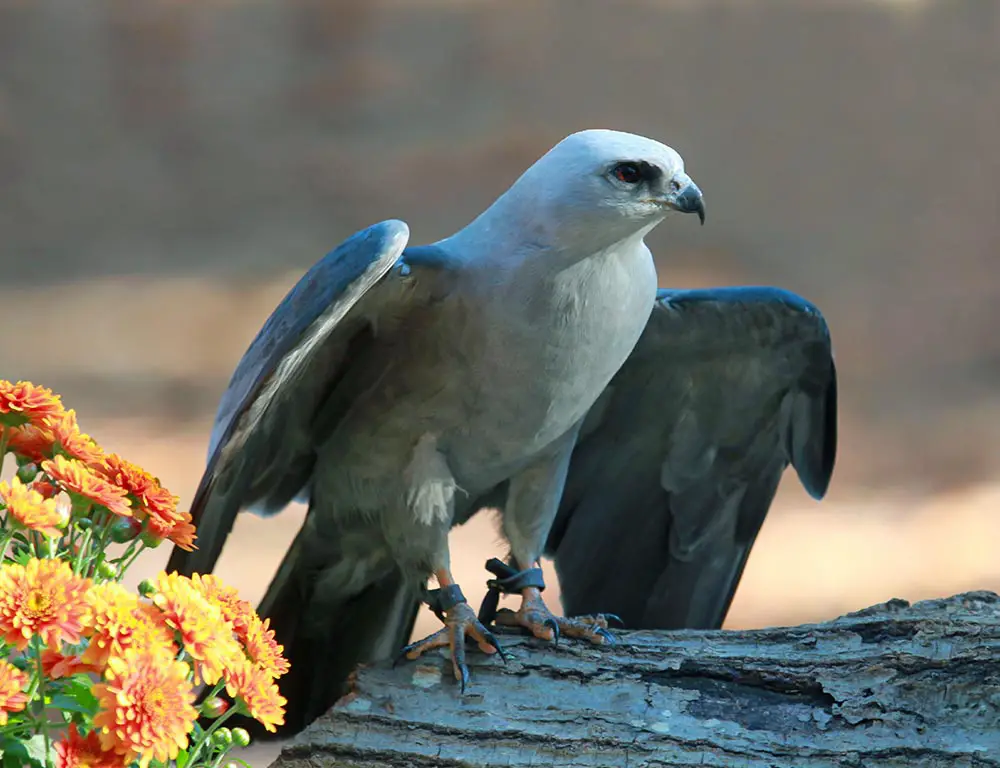
- Scientific name: Ictinia mississippiensis
- Size: 12-15 inches
- Weight: 6-12 ounces
- Population: Declining
- Life span: 6-10 years
- Wingspan: 33-37 inches
- Status: Least Concern
Mississippi Kites are graceful, slender raptors with long wings and a distinctive forked tail. They are commonly found in open woodlands and near water sources.
These kites primarily feed on insects, especially large flying insects like grasshoppers and cicadas.
They build nests in trees, often in loose colonies. While they are currently listed as Least Concern, there are concerns about their declining populations in some regions due to habitat loss and changes in land use.
Wrapping Up
In the diverse landscapes of Missouri, the 12 hawks showcased contribute to the intricate tapestry of the state’s avian biodiversity.
Each species plays a unique role in the ecosystem, from the majestic Peregrine Falcon’s high-speed pursuits to the resilient Swainson’s Hawk’s impressive migrations.
The hawks’ varied sizes, habitats, and hunting strategies highlight their adaptability and the importance of preserving Missouri’s rich natural heritage.
As we delve into the intricacies of their lifestyles, it becomes evident that these raptors are captivating creatures and essential components of the state’s ecological balance.
Understanding and appreciating the nuances of each hawk’s existence fosters a deeper connection with the natural world and emphasizes the need for conservation efforts to ensure their continued presence in Missouri’s skies.